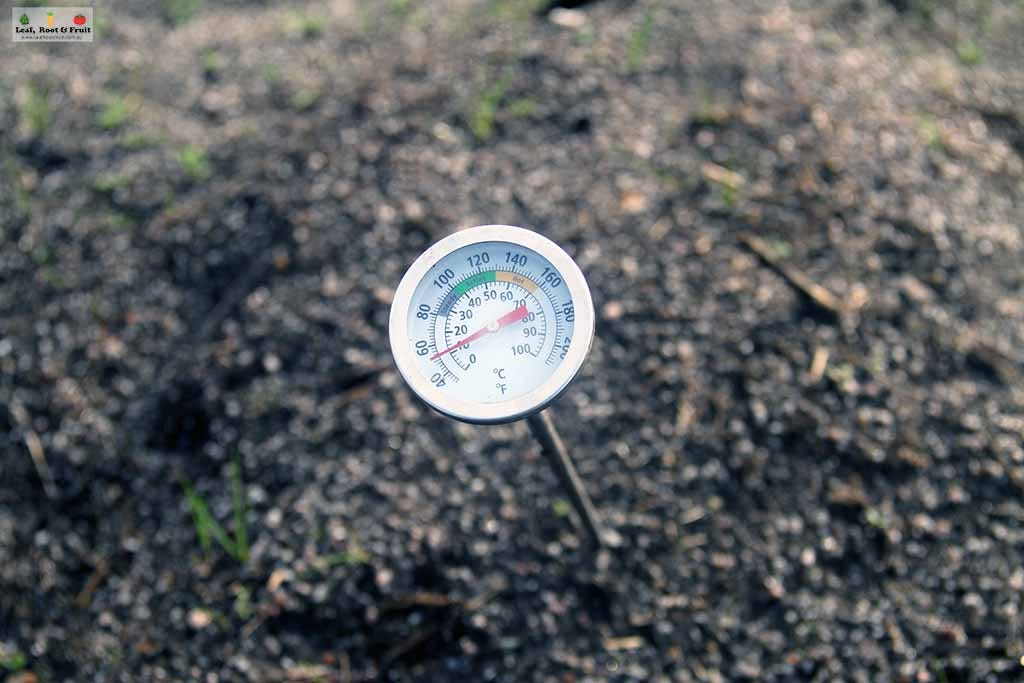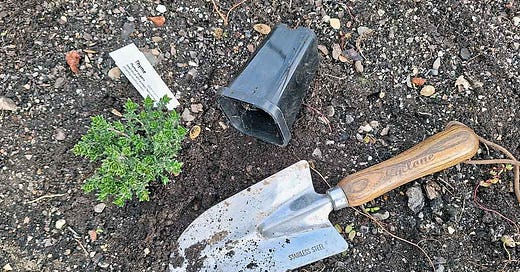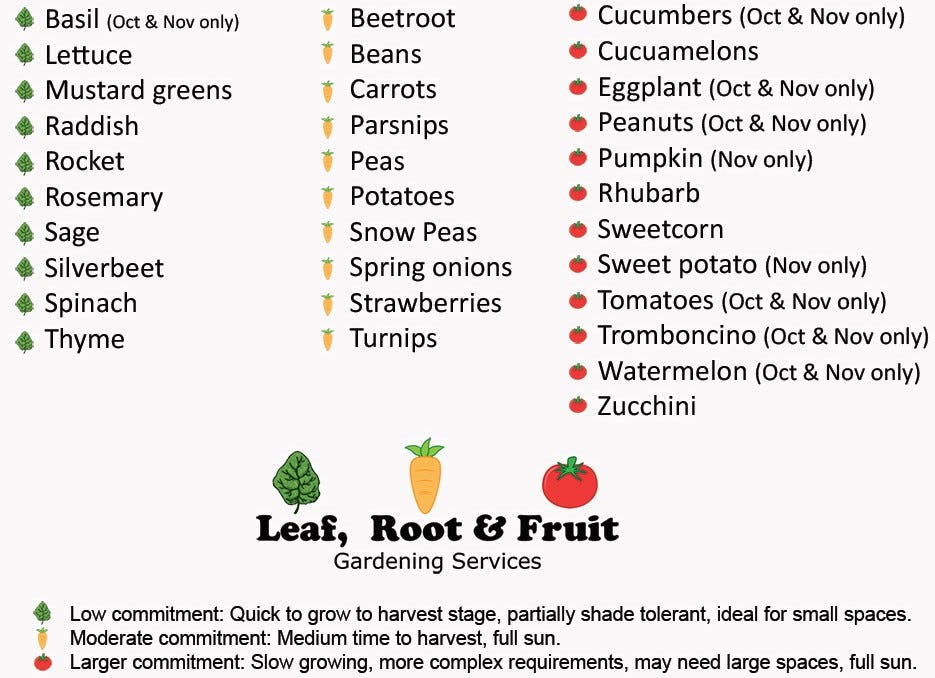Planting Vegetables: How to get the Timing Right
Part Twelve of the Vegetable Patch from Scratch Series
Growing food is like telling a great joke: timing is everything! Here’s a few tips for planning your planting schedule.
Many vegetable crops favour certain seasonal conditions. Temperate gardeners can sow their greatest range of vegetables in spring, for growing over the summer. Many vegetable crops, such as tomatoes, eggplants, capsicum and sweet corn, need warm soil temperatures to thrive. Cooler temperatures may cause the plants to stagnate and leave them prone to pests and diseases. Frosts will damage or kill some vegetable plants.
There are many planting guides available to gardeners to help them plan the timing of their vegetable crops. My monthly newsletter and planting guide, published on the first Tuesday of each month, is one of them.
I have also published standalone planting guides for Melbourne-based gardeners for spring and autumn. I’ve summarised them below, but review the guides for more in-depth information with plenty of hints and tips.
Spring planting guide for Melbourne
See the in depth spring planting guide here.
Autumn planting guide for Melbourne
See the in depth autumn planting guide here.
My monthly planting guides are aimed at gardeners growing food in Melbourne and similar climates. The climate in Central Victoria, where I now garden, is very different from Melbourne’s climate. The growing season here is much shorter and planting times are very specific and inflexible.
For example, in Melbourne you can plant tomato seedlings as early as the end of September or as late as December. In Central Victoria, there’s a window of two to three weeks in November to plant tomato seedlings, otherwise they’ll likely amount to very little. There’s much more flexibility for Melbourne gardeners.
What determines whether a plant thrives or struggles: soil temperature vs ambient temperature
Most summer crops such as tomatoes, pumpkins and cucumbers are sensitive to frost. Late frosts will often kill young, unprotected seedlings. However, even if late frosts are avoided, sensitive young seedlings planted in cool conditions will not thrive. Sensitive summer vegetables are best planted once temperatures have warmed up. Plant enzymes can function more effectively at warmer temperatures. The plant will undertake greater photosynthesis and it will grow faster and stronger than when temperatures are cool. Planting your tomatoes before the soil has warmed up will probably not kill them, but their growth will slow considerably. This puts them at risk of pest attack and diseases such as early blight. My Fool’s Garden Experiment perfectly demonstrated the dangers of planting tomatoes too early.
It is important to consider how temperatures are recorded when determining ideal temperatures for growing certain vegetables. Ambient temperature (that is the air temperature) is far more prone to fluctuations than soil temperature. Interestingly, it is the soil temperature that has more influence on the growth patterns of most vegetable crops. In spring, soil temperature tends to warm far more slowly than the ambient temperature. Soil thermometers are an accurate way to gauge soil temperature, although touch can be a good guide.

The soil takes a lot longer to warm in Central Victoria than it does in Melbourne. It also cools down more quickly in autumn. Therefore, our growing season here in Kyneton is much shorter than for those lucky folks growing in Melbourne.






